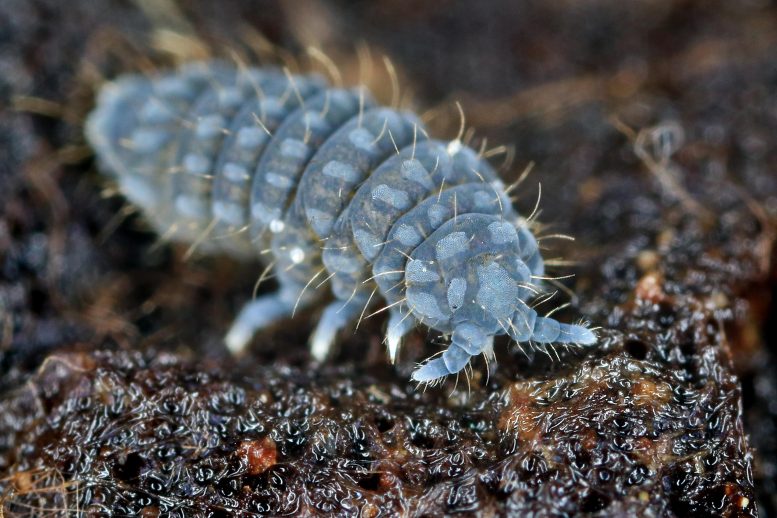
Springtails are ancient. They first appeared more than 400 million years ago and probably share an ancestor with insects. Since then, however, they have evolved in a different direction than insects. And we now know they were the first animal to develop antifreeze proteins. Credit: Philippe Garcelon / Wikimedia Commons
More than 400 million years ago, an insect-like animal called the springtail developed a small protein that prevents its cells from freezing.
The globe was hot and humid. The sea was teeming with life. Early squids, eel-like fish, and sea worms hunted smaller animals. Above ground, however, nothing stirred. The animals had not yet crawled ashore.
That was what the Earth looked like about 450 million years ago at the end of the Ordovician period.
The warm water created the perfect living conditions for wildlife. But this would soon change. Shortly after, the land masses would begin to freeze and an ice cap would start to spread.
The water, which had previously been warm and accommodating to wildlife, became cold and inhospitable. One species after another succumbed. In a short period of time, half of all life had been wiped out as part of the second-worst mass extinction in the history of the planet.
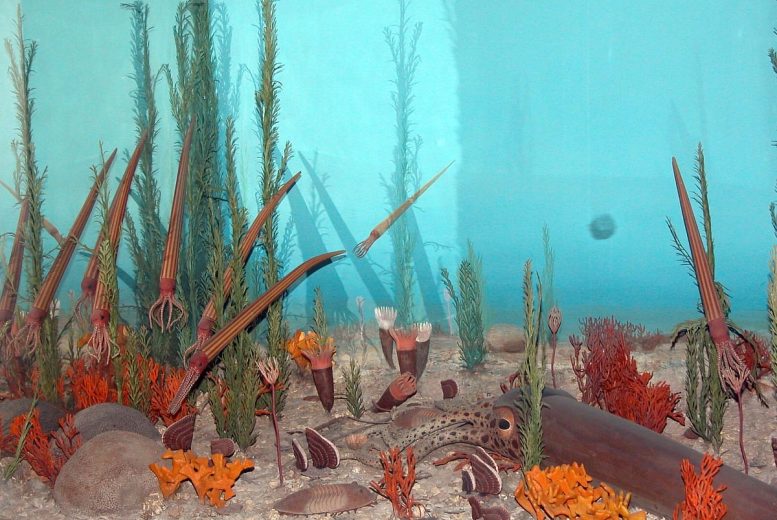
Life in the Ordovician period looked very different from today. The land was barren and devoid of life, but the sea was teeming. Squids and sea anemones, which can be seen in the illustration, were particularly dominant. But springtails existed at this time as well. Credit: Fritz Geller-Grimm / Wikimedia Commons
Springtails: The Survivors With Antifreeze Proteins
One of the animals that survived, however, was the springtail. A small, insect-like animal that had developed a special strategy to combat the cold. The animal’s cells had begun to produce proteins that could protect the cell from freezing.
The springtail might have been the first animal to ever develop antifreeze proteins. Scientists had previously believed that animals didn’t begin to do this until much later. This is shown by research from Aarhus University and Queen’s University in Canada.
“We knew that antifreeze proteins had developed independently of each other several times during evolutionary history. Fish have them. Insects have them. Some spiders have them. But until we saw these results, we didn’t know that they’d developed so early in the animal world,” says Martin Holmstrup.
He is a professor at the Department of Ecoscience at Aarhus University and one of the researchers behind the new study.
Springtails can be found everywhere – including your garden
The springtail is a small animal, and the largest species of springtail are only six millimetres long. It has six legs and two antennae in front. It looks like an insect at first glance, but it’s not. In fact, it has its very own branch on the evolutionary tree.
So far, researchers have found more than 9,000 different species of springtail, and they can be found almost everywhere – including in your garden. Springtails typically live in the upper layers of soil or in fallen foliage, where they feed on microscopic fungi, bacteria and other microorganisms.
The animal takes its name from its forked tail that it holds under its body like the bar of a catapult. The tail is also known as a furcula and the animal can release it quickly and leap up to 10 centimetres into the air if attacked by an enemy e.g. a spider.
Springtails are good for the health of soil because they help recirculate nutrients to plants.
Tiny Animals in Petri dishes
Martin Holmstrup looks after almost 20 different species of springtails in the laboratory. The small animals don’t need much space. An entire colony can live in a single glass bowl, he says.
“We keep them in Petri dishes with a base of plaster that we can keep moist. As feed, we give them a little dry yeast. That’s basically all they need,” he says.
The springtails in Martin’s laboratory were the ones used in the experiment. He sent samples from the animals to three colleagues in Canada, who conducted a number of molecular experiments to find out when the animals first developed the antifreeze protein.
Because the researchers know the DNA sequence that enables cells to build the antifreeze protein, they can search for the same sequence across species, families, and ranks. They can also calculate when the mutation that led to the genesis of the gene occurred: the Ordovician period.
“The calculations show that springtails developed the antifreeze protein long before other animals. It didn’t happen for fish and insects until a million years later. Although plants and microorganisms, such as bacteria and single-celled algae, might have developed a similar mechanism even earlier,” he says.
How to find springtails
Martin Holmstrup and his colleagues at the Department of Ecoscience gathered the springtails for the lab themselves. They were gathered in Denmark, Iceland and Greenland.
They are not that hard to find, you can even find them in your own garden.
Just follow these steps:
Grab a handful of soil or foliage from your garden and place it in a sieve.
Place an adjustable lamp over the sieve and put a tray under the sieve.
The heat from the lamp will make the springtails search for colder environs. This will make them fall through the sieve and into the tray, where you’ll find them crawling around.
Encapsulates and Slows Down Ice Crystals
Although you can find springtails almost anywhere on the globe, they are more numerous in the Arctic than anywhere else. Only a small number of other terrestrial animals can survive the cold of Greenland and Canada, meaning the springtails can feed on bacteria and fungi undisturbed.
“The springtails’ super-potent antifreeze proteins allow them to survive in cold regions where there they only have to share food with a few other worms and insects. And they don’t have many natural enemies,” says Martin Holmstrup.
In winter, when temperatures drop in the Arctic, springtails begin to produce antifreeze proteins. They are also called “ice-binding proteins” because they can latch to the surface of tiny ice crystals and prevent them from growing bigger. Terrestrial animals come in close contact with ice crystals when the soil freezes, so antifreeze proteins play an important role in preventing the ice from spreading into the animal and killing it.
“Just like us — and most other animals — springtails can’t survive if their “blood” freezes to ice. The antifreeze proteins help prevent this,” he says.
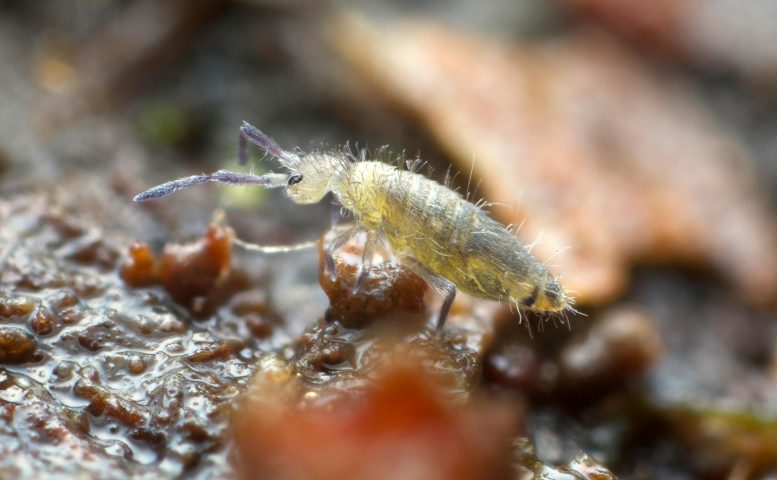
Springtails come in many shapes and sizes – and there are more than 9,000 different species. And these are just the number of species we have discovered. The researchers estimate that there exist twice as many, if not more, species of springtail. Credit: Andy Murray / Wikimedia Commons
Dry as a Raisin
However, this special protein is not the only ability that makes it possible for springtails to survive in the harsh cold of the Arctic. They have another trick up their sleeve.
“Because every living thing has water molecules within its cells, we are vulnerable to freezing temperatures. If the water freezes, the cells are destroyed. To prevent this, the springtail allows itself to dry out and go into a form of hibernation over the winter,” explains Martin Holmstrup.
When springtails hibernate, their metabolism becomes so slow that scientists can’t actually measure it. However, when spring arrives, they absorb water back into the body and restart their metabolism.
“You can compare them to a grape that dries into a raisin in a process reminiscent of freeze-drying. The springtails shrink and become small, wrinkly critters in winter. And then, when spring arrives, they absorb water and swell back to normal size,” he says.
Discovered in Fish That Should Have Frozen to Death
For many years, it was a mystery how certain animal species could survive in the coldest regions of the planet. It wasn’t until the middle of the last century that scientists discovered the antifreeze proteins that made it possible for animals to cope with the cold.
For decades, scientists had wondered how arctic fish were able to swim around seawater that was minus 1.8 degrees Celsius. The freezing point of seawater is lower due to its salt content. The blood of the fish, on the other hand, has a freezing point of minus 1 degree Celsius, which means they should not be able to avoid freezing in the water.
“How fish managed to survive in icy seawater was a mystery for a long time. However, in the late 1960s, the American researcher Arthur DeVries was able to isolate the proteins found in Arctic fish, which he discovered were able to prevent ice from forming in the cells and blood of the fish, even though the fish had been supercooled throughout its life,” explains Martin Holmstrup
Since then, researchers have discovered antifreeze proteins in a number of other animals, plants and microorganisms. And these antifreeze proteins are now being used by industry.
“The genes that encode the antifreeze proteins in fish have been copied into industrial yeast cell cultures. This makes the yeast produce the very useful proteins, which can then be added to different foods.”
— Professor Martin Holmstrup
History and Application of Antifreeze Proteins
A lot of food these days is bought and sold as frozen foods. However, the problem is that frozen food changes if ice crystals begin to form. They often diminish both the taste and texture of the foods.
However, this can be prevented by the special antifreeze proteins, explains Martin Holmstrup:
“The genes that encode the antifreeze proteins in fish have been copied into industrial yeast cell cultures. This makes the yeast produce the very useful proteins, which can then be added to different foods,” he says.
One of the foods where the proteins are particularly effective is ice cream.
“I know Unilever has used the proteins in ice cream because they help create a really lovely texture. The ice cream can also be thawed and frozen again without turning into a hard block of ice crystals. In the longer term, this effect could be used in connection with the cryopreservation of transplant organs.
“Other industries like the aerospace and wind turbine industries have also experimented with the proteins. They hope the proteins can protect wings from freezing and needing to be de-iced.”
Reference: “Polyproline type II helical antifreeze proteins are widespread in Collembola and likely originated over 400 million years ago in the Ordovician Period” by Connor L. Scholl, Martin Holmstrup, Laurie A. Graham and Peter L. Davies, 1 June 2023, Scientific Reports.
DOI: 10.1038/s41598-023-35983-y
The study is financed by the Canadian Institutes of Health Research and the Danish Council for Independent Research.

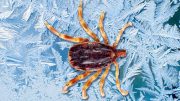

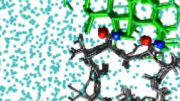





Be the first to comment on "Springtails: The Ancient Masters of Antifreeze and Arctic Survival"